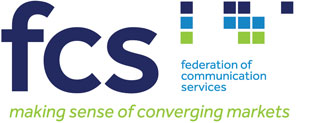Small-Scale DAB (SS-DAB) is a National Policy project to vastly increase the number of local radio stations throughout the country. It is to be expected that in your area, there will be at least one new SS-DAB station you can tune to. The FCS very much supports this goal providing that essential services are not affected.
DAB has its origins in OFDM technology. As such, alongside the excellent data capacity it provides, it produces significant amounts of spurious and OOB emissions. Normally the need to carefully filter the transmitter is taken for granted. Filtering the transmitter, while essential, can take several forms. For example, were the transmitter equipment to incorporate an on-board filter that meets the regulations, an additional filter would not be needed, sparing the operator the cost of the additional filter.
All civil radiocommunications is subject to licensing which includes limits on radio spectrum emission masks that transmitters must adhere to. In the case of DAB, the transmitter emissions are required to comply with the standard: EN 302 077. There are limits for spurious emissions and also Out-of-Band Emissions. The standard provides four sets of Out-of-Band limits described as transmission masks in the frequency domain. Currently the proposed licences will default to Case 1 (see EN 302 077, section 4.2) with work in progress to look at opportunities to significantly relax the limits, where possible, for lower power applications (by applying the Case 2 mask in the licence instead of the Case 1 mask). The FCS is concerned that because Case 2 limits are the same as Case 1 for frequency displacements at ±3MHz or more from the centre frequency, neither case provides the necessary protection.
The two emission masks described for Case 1 and 2 are very different at frequencies close to the DAB system centre frequency. But are the same at ±3MHz or more, from the centre.
Because the SS-DAB strategy is intended for more local services, it is natural that DAB deployments will result in many sites. Some of which will be close to, or even co-located with, other services, like BR. In these cases, the amount of interference to BR systems at the high end of VHF and Band III SB 1 could be significant, even to the point that those systems are unusable. This is because compliance to either of Case 1 or Case 2 spectrum masks may be insufficient.
To illustrate the OOB problem, we take the (common) instance of a modest-sized site (no massive tower etc.) shared between BR and SS-DAB. The BR system has a channel with its centre frequency assumed to be at or beyond ±3MHz from the DAB system centre frequency.
An extremely simple analysis follows:
SS-DAB power output = 200W (23dBW)
Propagation loss = 0 (co-located)
Coupling Loss = 60dB (figure taken from the ETSI Site Engineering Guide)
EN 302-077 Spurious limit for 200W = 75dBc down on 23dBW (53dBm) I.e. -52dBW (-22dBm)
EN 302-077 OOB Filter Mask limit at 3MHz from the centre frequency:
Case 1 = -106dBc
Case 2 = -106dBc
Case 3 = -126dBc
Case 4 = -126dBc
As a receiver can be deemed to be capable of actual reception at -116dBm (-146dBW) – the Ofcom figure, we could expect such a receiver to start to be lifted at -124dBm (-154dBW). Thus, unless other factors apply, the receiver will be completely ‘captured’ at signals of -116dBm (-146dBW) and above.
The numbers above have that for Cases 1&2, the unwanted power into the receiver is -143dBW (-113dBm) and thus the receiver is fully ‘captured’. For Cases 3&4 the unwanted power into the receiver is -163dBW (-133dBm) and thus the receiver is not opened.
Note that in writing EN 302 077, the ETSI group understood the issue and therefore included Cases 3 & 4 in the OOB limits, both of which have 20dB of extra filtering and thus appear to remove the problem entirely for BR if used.
Continuing the example to Spurious Emissions, if a spur lands on the receive frequency, it is almost certain to interfere with the wanted signal. As there are to be many more transmitters than before, this is more likely than we have previously considered. The actual level of the unwanted signal depends, of course, on which spurious product is involved.
For information, the Spectrum Information Service appears to indicate that there are 35,978 entries for assignments between 160 and 191MHz for Technically Assigned, Area Defined and CSS Marine licence types.
Because the attenuation of the transmitted signal may, in practice, improve as the frequency difference between the SS-DAB transmitter centre frequency and the victim receiver channel increases, it may be that this issue relates to only the SS-DAB spectrum blocks that are closest to the BR systems. This is yet to be confirmed.
In consequence of these points, the FCS does not agree that the interference to critical operational radiocommunications located in the VHF and BAND III bands caused by SS-DAB licensed for use complying to either Case 1 or Case 2 Out-of-Band emission masks, can be disregarded. We believe that if the systems emit power that is close to the Case 1 and Case 2 emission masks, there is a high probability of Harmful Interference.
